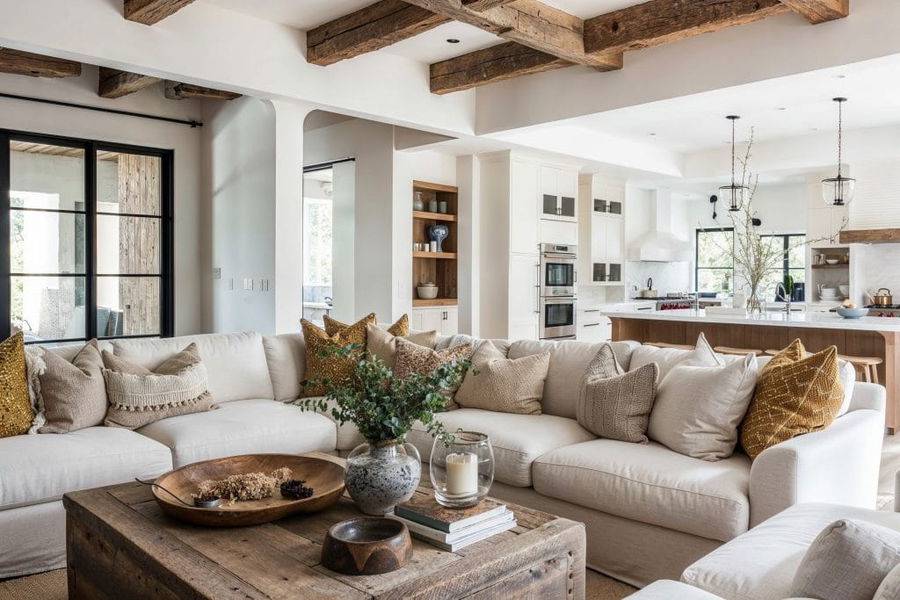Buying furniture can be an exciting yet daunting experience. Whether you’re furnishing a new home or refreshing your current space, the pieces you choose will influence your comfort, style, and overall satisfaction for years to come. Unfortunately, many people fall into common pitfalls during the buying process, which can lead to regret, wasted money, or even headaches down the road. To help you navigate this journey with confidence, here’s a guide on how to avoid those typical mistakes when purchasing furniture.
1. Not Measuring Your Space Properly
One of the biggest errors buyers make is neglecting to measure their rooms before purchasing furniture. It’s easy to get swept up by a beautiful couch or dining set, only to find it doesn’t fit through your doorways or overwhelms your living room. Take the time to measure the dimensions of the room where the furniture will go, including doorways, staircases, and elevators if you live in an apartment.
Remember to also consider the scale of the furniture in relation to other pieces in the room. A giant sectional might look impressive in a showroom but feel cramped in your smaller space. Use painter’s tape on the floor to map out the size of the furniture you’re eyeing to visualize how much space it will occupy.
2. Overlooking Comfort and Functionality
While style is important, furniture should first and foremost be comfortable and functional. A stunning sofa might be visually appealing, but if it’s too firm, too soft, or lacks proper support, you’ll end up sitting elsewhere.
Always test the furniture in-store if possible. Sit on chairs, lie down on beds, and open drawers or cabinets to ensure they operate smoothly. For sofas and chairs, check the seat depth and cushion firmness according to your comfort preferences. Consider your lifestyle, too—if you have kids or pets, durable, easy-to-clean fabrics might be a better choice.
3. Ignoring Material Quality
Investing in quality materials can save you money in the long run. Furniture made from cheap particleboard or low-quality fabric tends to wear out quickly, leading to replacements sooner than you might expect. Look for solid wood frames, sturdy joints, and durable upholstery fabrics. If buying online, be sure to read detailed product descriptions and customer feedback to understand the materials used.
Speaking of reviews, many shoppers turn to online opinions to gauge the reliability of furniture sellers. For example, Coleman Furniture reviews often highlight the store’s diverse selection and reasonable pricing, alongside insights on craftsmanship and customer service. Reviews like these can help you separate trustworthy retailers from those with inconsistent quality.
4. Forgetting to Set a Realistic Budget
Furniture can quickly become a costly investment, so it’s crucial to establish a budget before you start shopping. Avoid the trap of falling in love with items that stretch your finances. Consider all costs, including delivery fees, assembly charges, and any warranties or protection plans.
If you find a piece you love that’s just outside your budget, check if the retailer offers financing options or seasonal sales. Be wary of impulse buys driven by discounts if the furniture doesn’t truly meet your needs or quality standards.
5. Skipping Style Coordination
It’s tempting to buy furniture that appeals to you in isolation, but it’s equally important to ensure it fits with your existing décor. Consider the colors, textures, and overall style theme of your home. Mixing vastly different styles—such as ultra-modern with rustic farmhouse—can sometimes work if done thoughtfully, but it requires a good eye.
Create a mood board with fabric swatches, paint samples, and photos of your current furniture to see how new pieces will integrate. If you’re unsure, many furniture stores offer design consultations that can help you make cohesive choices.
6. Neglecting Delivery and Assembly Details
Buying furniture is only half the battle—getting it home and setting it up can be another challenge. Confirm delivery options and fees before finalizing your purchase. Some retailers provide free shipping or assembly, while others charge extra.
Make sure your delivery date works for your schedule and that you have enough help to move and assemble the furniture. Check if the pieces come pre-assembled or require extensive setup. If you’re purchasing online, read the return policies carefully in case the furniture arrives damaged or doesn’t match the description.
7. Overestimating Online Photos
Online shopping for furniture is convenient, but photos can sometimes be misleading. Colors may look different on your screen, and photos often show furniture in idealized, perfectly lit settings. To avoid disappointment, look for detailed product specifications and customer photos or videos in reviews.
If possible, visit a physical showroom of the brand or retailer you’re considering. This can help you verify the texture, color, and overall look before committing. If visiting a store isn’t an option, ask the seller for fabric samples or swatches to get a better sense of the material.
8. Not Considering Long-Term Needs
Think beyond your current situation. Are you planning to move soon? Will your family grow? Will the furniture need to accommodate guests frequently? Choosing pieces that adapt to your changing needs can save you money and hassle.
For example, a sleeper sofa might be a great investment if you regularly host overnight guests. Modular furniture offers flexibility, allowing you to rearrange or expand as needed. Choosing neutral colors and classic designs can help your furniture stay relevant despite shifting trends.
In Summary
Buying furniture is more than just picking something that looks nice. It requires thoughtful planning and research to avoid costly mistakes. Measure your space carefully, prioritize comfort and durability, set a realistic budget, and consider your long-term lifestyle needs. Don’t hesitate to check reviews from trusted sources, which can provide valuable insight into the quality and customer experience of various retailers.
By following these guidelines, you’ll be better equipped to find furniture that not only beautifies your home but also stands the test of time.

